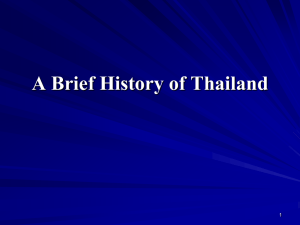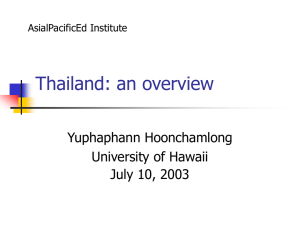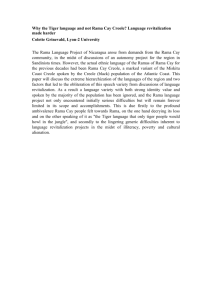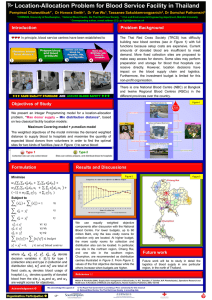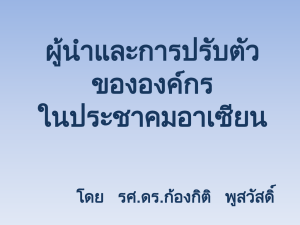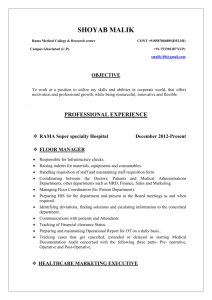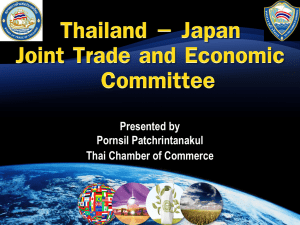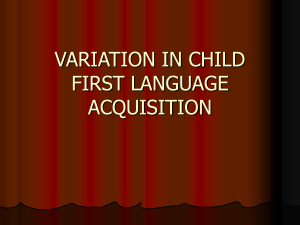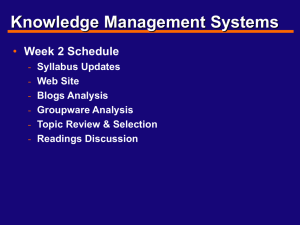Language Planning and Policy 4/19
advertisement
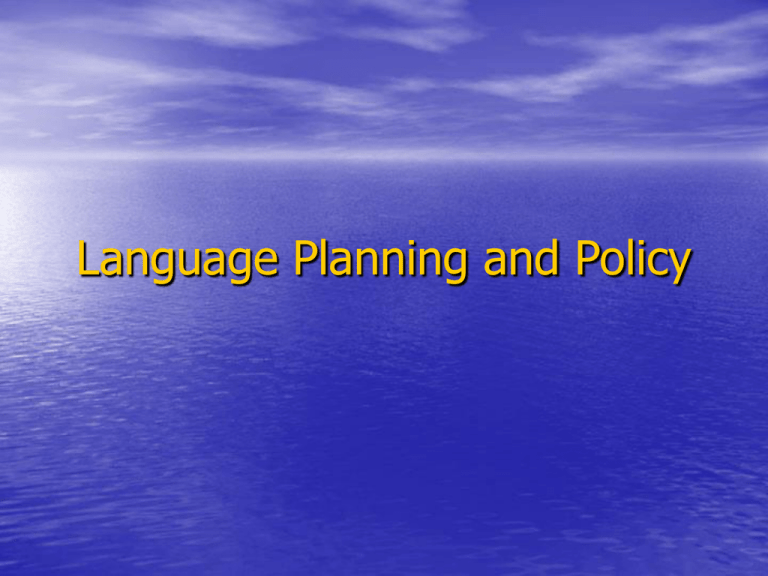
Language Planning and Policy Language Planning • is all conscious efforts that aim at changing the linguistic behavior of a speech community. English vs. German Immigrants Language Policy • is the more general linguistic, political and social goals underlying the actual language planning process. U.S. Government vs. Native American languages Two types of Language Planning Heinz Kloss 1. Corpus Planning is the internal structure of the language. Activities include a writing system for a spoken language, initiating spelling reforms, creating new terms and publishing grammar books. 2. Status Planning refers to all efforts undertaken to change the use and function of a language or language variety within a given society. Einar Haugen’s View Language planning is a technocratic process concerned with systematizing and cultivating a standardized language code to solve problems. • • • Emphasized the importance of the written standard over the spoken. Dialects (regional or social) hamper communication. Concerned with equality among standard languages, non-standard languages are problematic. Neoclassical-autonomous approach Neoclassical Approach vs. Historical Approach Tollefson (1991) Neoclassical Historical • Individual choice • Historical-structural • Current language situation • Evaluation is in ahistorical and amoral terms • This model assumes that the field of applied linguistics and teachers are apolitical influence of socio-historical factors on language use • Considers past relationships between groups • Concerned with issues of class dominance and oppression • Political stance is inescapable for those who avoid political questions in advertently support the status quo. Autonomous vs. Ideological Street (1984) Autonomous • Literacy is a “NEUTRAL” technology which can be detached from social context • Literacy can be isolated as an independent variable • Sets up a dichotomy between written and oral modes of communication Ideological • Concentrates on the “social practices” of reading and writing & recognizes these practices are culturally embedded • Literacy is a “socially constructed practice” having different meaning for different groups • Considers overlap of the oral and literate modes Haugen’s Framework… 4 Phases of Language Planning 1) 2) 3) 4) Selection Codification Implementation Elaboration/Modernization 1. Selection is the term used to refer to the choice of a language variety to fulfill certain functions in a given society. 2. Codification The creation of a linguistic standard or norm for a selected linguistic code. It is divided up into three stages: 1) Graphisation – developing a writing system. 2) Grammatication – deciding on rules/norms of 3) grammar Lexicalisation – identifying the vocabulary Western Apache Writing System “Prayer for Life” Apache Language Today The Apache language adopted the Latin alphabet for their written representation, adding symbols to indicate unique sounds in their language. This was largely due to the influence of missionaries translating the Bible into the Apache language. There are no standardized spellings. Words are spelled phonetically. Chris Harvey www.languagegeek.com 3. Implementation Promoting of the decisions made in the stages of selection and codification which can include marketing strategy, production of books, pamphlets, newspapers, and textbooks using the new codified standard. Implementation can be either vigorous legal enforcement (Native Americans in BIA boarding-schools) or encouragement (Spanish province of Catalonia, where the use of Catalan is encouraged, but not enforced). Implementation example… Posters in Language Classrooms 4. Elaboration/Modernization Refers to the terminology and stylistic development of a codified language to meet the communicative demands of modern life and technology. Its main area is the production and dissemination of new terms. Elaboration is an ever evolving process… Lexical Modernization Three strategies: 1) Borrowing 2) Extension of the meaning of a native term 3) Creation of the new terms (neologisms) 1) Portable Document File (PDF) 2) Trash Can - (Ko) - Fire 3) Power Cable - (Kqh bitl’ool) - Electricity’s Rope Boss Dialects in Thailand First Thai script 1283 by Sukhothai's kings, Ramkamhaeng the Great 1871, in the reign of Rama V the Command Declaration on Schooling was issued Rama V Language planning: Thai • Since King Rama V (1868-1910) • Official language: Thai • regulated by the Thai Royal Institute • Assimilation policy • Political goal • Acquisition planning: Ministry of Education 1800s, Rama IV imposed English as a new educational requirement Language planning: English in Thailand • Current compulsory education (year 1-12) • Bilingual schools • International schools (88 established) Adam CASE STUDY: SOUTH AFRICA CASE STUDY: SOUTH AFRICA South Africa • Multilingual vs. Monolingual • Which context viewed as problematic? • Who decides? LANGUAGE AS CODE VS LANGUAGE AS SOCIAL BEHAVIOR Liebowitz (1974) •“Language policy as social control” Ruiz (1984) • Three contrasting views of Language – As a problem – As a right – As a resource SOUTH AFRICAN GOVERNMENT • “Official” stance –South Africa should be a fully functional multilingual society A critique of the “official” policy • “Too idealistic” –Mfanafuthi Mgqwashu (2004) • REVISITING THE CASE OF SOUTH AFRICA AND ITS LANGUAGE POLICY Language Planning and Policy
